All About Shizuoka Grean Tea
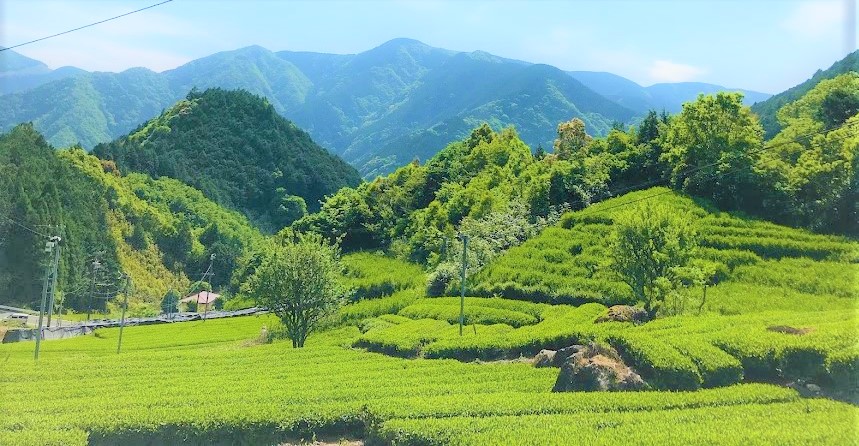
“Shizuoka is Japan’s top tea-producing region, thanks to its warm climate and ideal amount of rainfall, which create perfect conditions for tea cultivation. About 40% of Japan’s total tea-growing area, fresh tea leaf harvest, and crude tea production come from Shizuoka.
The history of Shizuoka tea goes back centuries. It is believed that during the Kamakura period (1185–1333), a monk named Shoichi Kokushi brought tea seeds from China’s Song Dynasty and planted them in the Ashikubo area of Shizuoka City. This marked the beginning of tea cultivation in the region. Later, during the late Edo period (1603–1868), samurai from the Tokugawa shogunate developed tea fields in the Makinohara area, making Shizuoka the country’s largest tea-producing region. By the Meiji period (1868–1912), Shizuoka tea had also become an export product. More than 90% of the tea plants in Shizuoka belong to the “Yabukita” variety, which was discovered in 1908 by Sugiyama Hikosaburo. “
“Deep-steamed tea” and “Regular Sencha”
Nowadays, when people think of green tea, they often think of “Fukamushi-cha” (Deep-steamed tea) because it has become so popular. But originally, “Regular Sencha,” which is also used in the Senchado(Japanese tea ceremony), tea with a shorter steaming time was traditionally preferred. “Deep-steamed tea” and “Regular Sencha” have the following major characteristics:
Fukamushi-cha (Deep-steamed Tea)
“Fukamushi-cha is made by steaming freshly picked tea leaves for 60 to 180 seconds. Because of the longer steaming process, the tea leaves break down and do not have the beautiful, needle-like shape of regular sencha. However, this extended steaming enhances the tea’s color, creating a vibrant deep green hue when brewed. Fukamushi-cha has less bitterness and a naturally sweet, rich flavor.
Additionally, because the leaves become finer during steaming, more β-carotene, vitamin E, and chlorophyll are released into the tea. These nutrients are known for their antioxidant properties, ability to improve blood circulation, and support for the immune system.”
Regular Sencha
Regular Sencha is steamed for a shorter time, about 30 to 60 seconds. It is the type of tea traditionally used in Senchado(Japanese tea ceremony). Compared to Fukamushi-cha(Deep-steamed Tea), Regular Sencha has a more beautiful, refined shape, making it look almost like a work of art. When brewed, the regular sencha has a clear greenish-yellow color, with the natural aroma and slight bitterness of green tea, giving it a refreshing and crisp taste.
Types of Green Tea
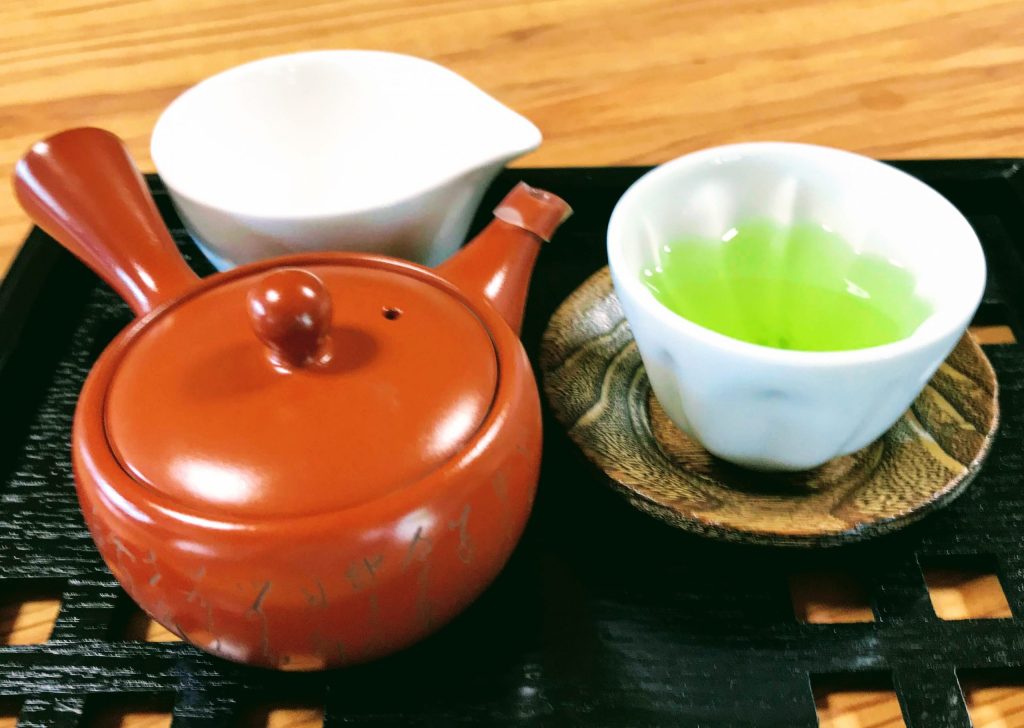
Green Tea
Japanese green tea is a “non-fermented tea” because the fermentation process is stopped by steaming the leaves. In China, green tea is also produced, but the fermentation is stopped by pan-roasting, which is why it is called “pan-roasted tea.” In Japan, pan-roasted tea is also made in some regions, particularly in Saga, Kumamoto, and Miyazaki prefectures in Kyushu.
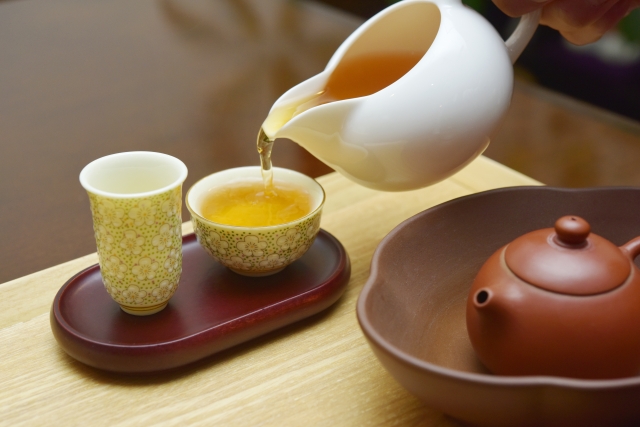
Oolong Tea
Oolong tea is made by stopping the fermentation process partway through production, which is why it is called a “semi-fermented tea.” Depending on when the fermentation is stopped, the color of oolong tea can range from light green, like green tea, to dark brown, like black tea. There are hundreds of types of oolong tea, each with its own unique aroma and flavor to enjoy.
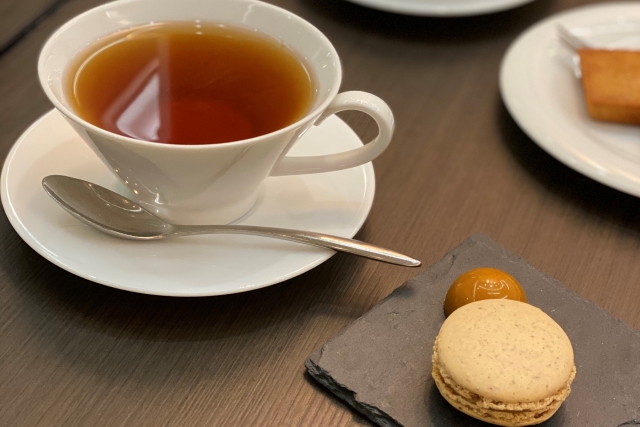
Black Tea
Black tea is made by withering fresh tea leaves and allowing them to fully oxidize. Because of this, it is called a “fully fermented tea.” Due to the full fermentation process, the tea has a deep brown color, different from green tea or oolong tea. The name “black tea” is said to come from its distinctive tea color.
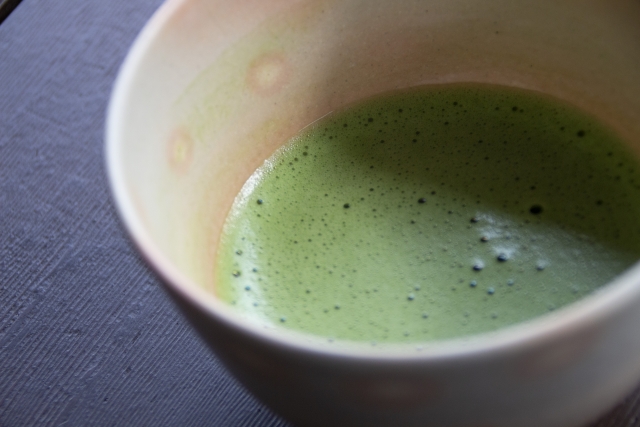
Matcha
One month before harvesting, tea plants are covered with shade cloth to block sunlight. This method helps the new tea buds develop a high amount of theanine, an amino acid that gives the tea its rich umami flavor. These buds are then steamed, dried, and processed to remove stems and leaf veins, resulting in “tencha.” Matcha is made by grinding tencha into a fine powder using a stone mill. In Japan’s traditional tea ceremony, matcha is the tea of choice. Shizuoka’s matcha is considered one of Japan’s top three matcha-producing regions, along with Uji tea from Kyoto and Yame tea from Fukuoka.
Major Tea-Producing Regions in Shizuoka
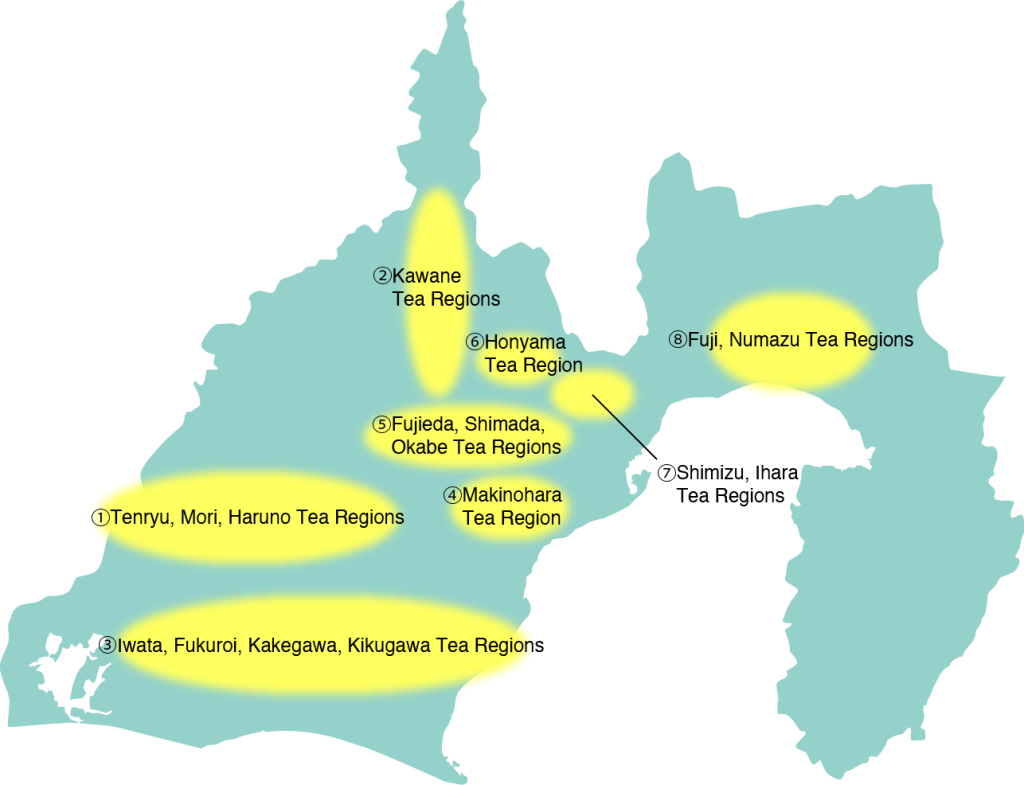
Shizuoka is located in the central part of Japan, facing the Pacific Ocean, and stretches approximately 160 kilometers from east to west. As a result, each tea-producing region has its own established brand. Whether in the mountainous regions with extreme temperature variations, the foothills with remnants of snow in early spring, or the relatively temperature-stable plains and coastal areas, each region has developed unique cultivation methods.
(1) Tenryu, Mori, Haruno tea regions … Located in the western part of Shizuoka, centered around the upper reaches of the Ota River and Tenryu River, these regions have long been known as a producer of high-quality tea. Due to its mountainous terrain, the temperature difference is significant, and mist is common, leading to fewer pests, making it a suitable area for tea cultivation. The tea has a refreshing fragrance and crisp taste, with a balanced combination of sweetness and astringency.
(2) Kawane tea region … This tea is grown in the mountainous slopes of the upper Oi River in central Shizuoka. It is characterized by a balanced flavor that offers both freshness and astringency. Known for centuries as a famous tea-producing region, it is recognized nationwide.
(3) Iwata, Fukuroi, Kakegawa, Kikugawa tea regions … Located in the fertile and water-rich region of Shizuoka, these regions are especially warm and produce tea with a rich, mellow sweetness. They are known as the production areas of
4) Makinohara tea region … Makinohara has vast tea fields and is the largest tea-producing region in Japan. The sunlight pours down on the Makinohara land, cultivating deep-steamed tea with a sweet and mellow flavor. Additionally, it is home to national and prefectural tea research stations and is conveniently located near Mount Fuji Shizuoka Airport.
(5) Fujieda, Shimada, Okabe tea region … The mountainous land shaped by the clear streams of the Seto, Hanashi, and Asahina Rivers has good drainage, and the large temperature difference between day and night helps cultivate aromatic tea. Particularly, the upper reaches of the Asahina River are known as one of Japan’s three major Gyokuro tea regions, alongside Uji in Kyoto and Yame in Fukuoka.
(6) Motoyama tea region … This region has the longest history among Shizuoka’s tea-producing regions. Tea is produced in the upper reaches of the Abe River in central Shizuoka. The mist that rises from the river in the morning and evening enhances the refreshing flavor that is characteristic of the tea.
(7) Shimizu, Ihara tea regions … Located around Nihondaira and the Okitsu River basin, these tea regions have tea farms on mountain slopes. Tea grown in the Shimizu region has a rich flavor and a refreshing aroma, while tea grown in the Ihara area is characterized by a strong aroma and a refreshing astringency.
(8) Fuji, Numazu tea regions … Located in the southwestern foothills of Mount Fuji and the slopes of Mount Aitake, these regions produce tea with a balanced taste of astringency and sweetness. Tea plants planted in the volcanic ash soil of Mount Fuji are rich in minerals and have a refreshing taste.
